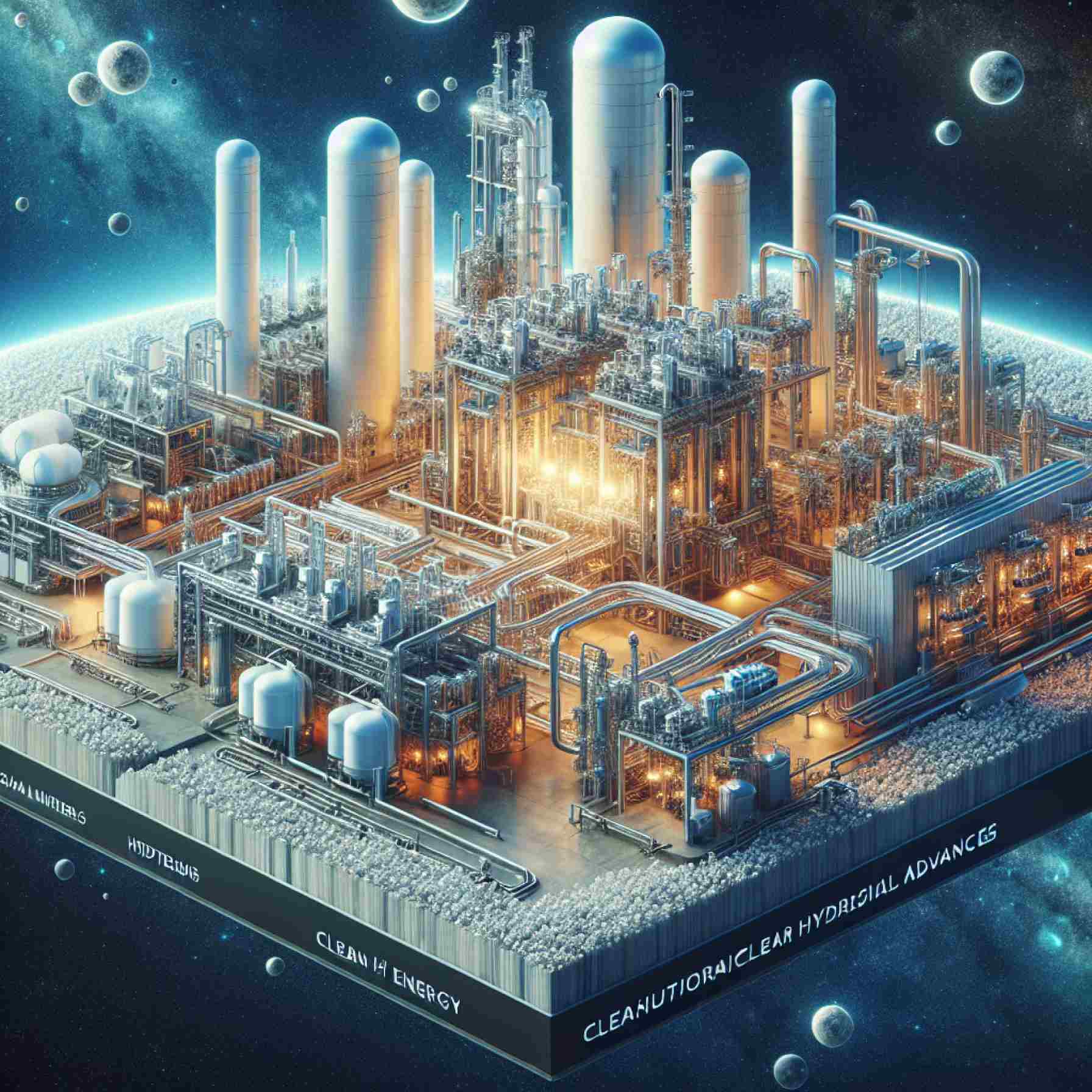- Hydrogen is positioned as a key sustainable energy source, promising a reduction in carbon emissions through innovative production methods.
- An advanced photocatalytic water-splitting technique, developed by researchers led by Wei-Qing Huang, introduces a two-dimensional Janus material to enhance efficiency.
- The Janus material generates a strong electrical field, optimizing solar-to-hydrogen (STH) conversion and overcoming the pH-dependency issue in traditional methods.
- This approach significantly increases STH efficiency, transcending previous limitations and enabling energy generation in regions with varied water pH levels.
- Scalability challenges remain, but efforts are underway to validate the material’s durability and broaden the scope of applicable materials for hydrogen production.
- The breakthrough could transform global energy policy and infrastructure, aiding in the transition to a hydrogen-based, sustainable future.
In the lively dance of the Earth’s elements, hydrogen stands singularly poised as a beacon of sustainable energy. It whispers promises of a greener tomorrow — yet the cacophony of carbon emissions during its production often drowns these hopes. Now, an innovative breakthrough in material science brings clarity to this symphony, heralded by a team of dynamic researchers led by Wei-Qing Huang, as they unveil a revolutionary approach to photocatalytic water splitting.
Picture an endless expanse of solar farms, basking in the glorious spread of daylight, equipped with cutting-edge catalysts that transform sunlight and water into pure energy — hydrogen. These aren’t mere dreams, as recent advancements introduce a two-dimensional material with a Janus structure, notable for its striking asymmetry. This intrinsic design generates a powerful electrical field, essential for optimizing the water-splitting process.
Imagine this: like a skilled gardener nurturing seeds across varied soils, this material adeptly navigates a spectrum of pH levels, from neutral to alkaline, without relinquishing its efficiency. Here lies a novel solution to one of the most stubborn bottlenecks in photocatalytic energy: pH-dependent performance. By transcending the former limitations, this innovation more than doubles the solar-to-hydrogen (STH) efficiency, breaking the old bandgap barriers wide open.
Historically, the efficiency of converting solar energy into hydrogen has faced formidable obstacles. The Janus construction ushers in a new era where this energy transition is not only conceivable but remarkably efficient. Envision regions devoid of sophisticated infrastructure now able to harness clean energy with pH-tolerant catalysts that perform consistently despite fluctuations in water quality. The implications for energy policy and global infrastructure could be transformative, especially in areas clamoring for renewable solutions.
Undoubtedly, challenges persist in scaling this technology to industrial levels. Yet, the research team is determined to ensure the material’s robustness in the real world, while concurrently forging a comprehensive database that may illuminate more materials eager to join this energy revolution.
In this convergence of science and practicality, the hydrogen economy inches closer to reality. This leap forward offers more than just a technological marvel; it tempts us with the potential for tangible, globally impactful change. Our eyes turn to the horizon, where the sun’s brilliance may soon power a cleaner and more sustainable future, one hydrogen molecule at a time.
Sustainable Hydrogen Production: A New Frontier in Renewable Energy
Exploring the New Frontier in Hydrogen Production
The breakthrough in photocatalytic water splitting by Wei-Qing Huang and his team highlights a remarkable step toward sustainable hydrogen production. This innovation pivots on a two-dimensional Janus material, which is set to transform the landscape of renewable energy solutions.
How Does Photocatalytic Water Splitting Work?
Photocatalytic water splitting utilizes solar energy to split water (H₂O) into hydrogen (H₂) and oxygen (O₂). The process hinges on catalysts that absorb sunlight and initiate a chemical reaction. The Janus material, with its asymmetric structure and powerful internal electrical field, excels in this area.
Advantages of Janus Materials
1. Enhanced Efficiency: Janus materials have demonstrated a doubling of solar-to-hydrogen (STH) efficiency by overcoming bandgap limitations.
2. pH Tolerance: This material maintains high performance across varied pH levels, from neutral to alkaline, solving a major hindrance in previous photocatalytic technologies.
3. Scalability Potential: The design considers different water qualities, making it viable for regions lacking sophisticated water conditioning infrastructure.
Real-World Applications and Considerations
– Rural and Underdeveloped Areas: This technology can empower areas with limited access to stable electricity grids by facilitating local hydrogen production.
– Energy Policy Implications: Nations can diversify their renewable energy portfolios and reduce carbon footprints significantly.
– Global Infrastructure Enhancement: Scalable hydrogen production could revolutionize transportation, particularly in fuel cell vehicles and industrial sectors.
Market Forecast and Industry Trends
The global hydrogen market is poised for substantial growth, propelled by increasing emphasis on decarbonization. According to Allied Market Research, the hydrogen energy market is projected to reach $201.33 billion by 2025, showcasing the potential for economic expansion driven by sustainable technologies.
Security and Sustainability
The development of a comprehensive database for identifying similar materials is crucial for ensuring material robustness and scalability. This approach aims to guarantee sustainable implementation and secure energy transitions globally.
Potential Challenges
– Industrial Scale Implementation: Scaling the technology from laboratory to industrial levels remains a significant challenge.
– Initial Investment Costs: High production and material costs could impede initial adoption.
– Technical Limitations: Long-term stability and performance in varied environmental conditions require further assessment.
Actionable Recommendations
– Invest in Research: Continued support and funding for research in photocatalytic materials can expedite advancements.
– Policy Advocacy: Encourage policymakers to support hydrogen infrastructure development and incentivize renewable energy deployment.
– Adoption on a Smaller Scale: Begin with pilot programs in conducive environments to address scaling challenges early.
For more innovations and insights in renewable energy, visit the definitive resource for sustainable development at ResearchGate.
Explore further and stay abreast of the latest in hydrogen energy advancements and trends for a cleaner, greener planetary future.
